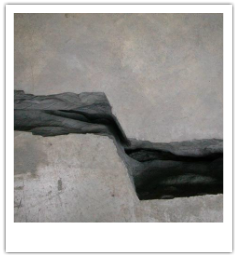DR ANDREW MCNIVEN
Monkey Business: AN ARTIST’S ACTION RESEARCH INTO THE PARAMETERS OF TEMPORARY GALLERY INSTALLATION THROUGH REFLEXIVE FORMAL AND INFORMAL DOCUMENTARY PRACTICE
Abstract
The term ‘installation’, referring to both process and product, is a significant component of contemporary fine art practice and the working lives of those involved. Consequently ‘installation’ can be seen as a domain of both fine art professional development and practice-led research. However, as art historian Mary Ann Staniszewski has observed (1998), the implication is that as process, this is an underresearched field of knowledge and this Ph.D. is an attempt, through a thesis and a body of practical work, to address this omission. Writing as an artist with significant experience as a technician, the thesis explores the insights that inform the work of technicians, using related theoretical concepts which map the conditions particular to the processes of installation: that of exhibits being subject to a binary condition, which I term ‘proper/improper’, and the concept of ‘tacit knowing’, developed by Michael Polyani (1966) as an index of specialist embedded understanding. Both ‘proper/improper’ and ‘tacit knowing’ are concealed by the sense of what I term ‘effortlessness’ that makes displayed objects part of an immutable fabric of exhibition culture. This is, in turn, compounded by the photographic ‘installation shot’, a form of documentation that, for commentators such as the writer and artist Brian O’Doherty (1976), creates idealized images of artworks. In reflecting upon the action research I have undertaken in order to penetrate the idealized surface of the ‘installation shot’, the thesis journeys from the visual to the aural in order to open up the ‘sensual 7 culture’ (Howes, 2005) around ‘installation’. Although not directly settingout to respond to Staniszewski’s proposition, the experiments with sound practice described and exhibited do, I claim, offer a creative response to our amnesia and an unfolding re-presentation of the processes and conditions of exhibition as it is currently experienced throughout museum and gallery culture.
The term ‘installation’, referring to both process and product, is a significant component of contemporary fine art practice and the working lives of those involved. Consequently ‘installation’ can be seen as a domain of both fine art professional development and practice-led research. However, as art historian Mary Ann Staniszewski has observed (1998), the implication is that as process, this is an underresearched field of knowledge and this Ph.D. is an attempt, through a thesis and a body of practical work, to address this omission. Writing as an artist with significant experience as a technician, the thesis explores the insights that inform the work of technicians, using related theoretical concepts which map the conditions particular to the processes of installation: that of exhibits being subject to a binary condition, which I term ‘proper/improper’, and the concept of ‘tacit knowing’, developed by Michael Polyani (1966) as an index of specialist embedded understanding. Both ‘proper/improper’ and ‘tacit knowing’ are concealed by the sense of what I term ‘effortlessness’ that makes displayed objects part of an immutable fabric of exhibition culture. This is, in turn, compounded by the photographic ‘installation shot’, a form of documentation that, for commentators such as the writer and artist Brian O’Doherty (1976), creates idealized images of artworks. In reflecting upon the action research I have undertaken in order to penetrate the idealized surface of the ‘installation shot’, the thesis journeys from the visual to the aural in order to open up the ‘sensual 7 culture’ (Howes, 2005) around ‘installation’. Although not directly settingout to respond to Staniszewski’s proposition, the experiments with sound practice described and exhibited do, I claim, offer a creative response to our amnesia and an unfolding re-presentation of the processes and conditions of exhibition as it is currently experienced throughout museum and gallery culture.

